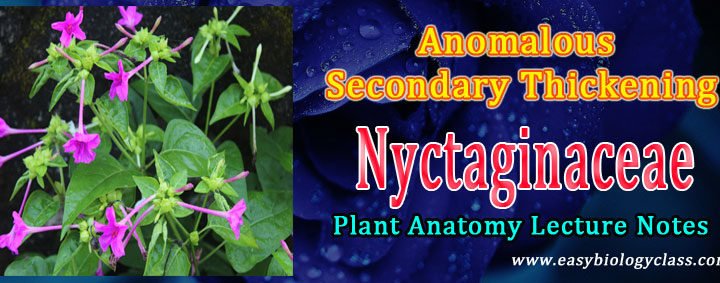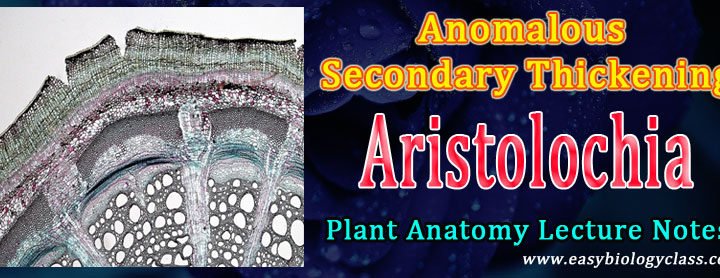Anomalous Secondary Thickening in Storage Roots (Dicots) Ø In many dicots, the root functions as a storage region. Ø The secondary growth in these storage roots is usually anomalous type. Example: Ø Secondary thickening in Beta vulgaris (Beetroot – Chenopodiaceae) Ø Secondary thickening in Ipomoea batatas (Sweet potato – Convolvulaceae) […]
Continue ReadingTag Archives: Anomalous Secondary Thickening
Anomalous Secondary Growth in Bougainvillea Stem PPT
Anomalous Secondary Growth in Bougainvillea Stem PPT: Anomalous Secondary Thickening in Bougainvillea, Anomalous Secondary Thickening in Dicot Plants, Process of Secondary Thickening in Plants, Included Phloem, Intra Xylary Phloem, Internal Phloem, Concentric Vascular Bundles, Amphivasal Vascular Bundles, Amphicribral Vascular Bundles, Formation of Accessory Cambium. Nyctaginaceae Anomalous Growth, Formation of Secondary […]
Continue ReadingAnomalous Secondary Thickening in Bougainvillea Stem
Bougainvillea (belongs to Nyctaginaceae family) is a thorny ornamental bushy plant extensively grown as ornamental hedges. The inflorescence of Bougainvillea consists of large colourful petal-like bracts which surround three simple flowers. A large number of colour variants for the bracts are available. Anatomically Bogainvillea is peculiar that its secondary thickening […]
Continue ReadingAnomalous Secondary Thickening in Mirabilis / Nyctanthes (Nyctaginaceae)
Mirabilis jalapa (4 O’clock plant) and Nyctanthes belongs to the family Nyctaginaceae. In the previous post we discussed the anomalous secondary thickening in Amaranthus / Achyranthes (Amaranthaceae). Similar to Amaranthus, the secondary thickening in Mirabilis and Nyctanthes also occurs due to the formation of accessory cambia formed external to the […]
Continue ReadingAnomalous Secondary Thickening in Amaranthus and Achyranthes Stem
Anomalous secondary thickening in Amaranthus and Achyranthes occurs due to the abnormal activity of an abnormal cambium. Here, new cambial rings are formed from the cortex or pericycle after the older cambium has ceased its functioning. The new cambial strip formed also behaves abnormally. This type of anomalous secondary thickening […]
Continue Reading



